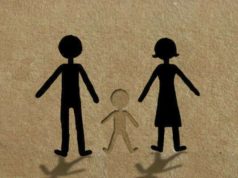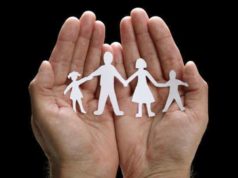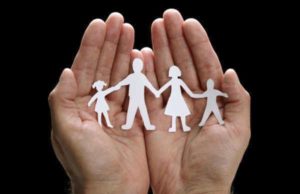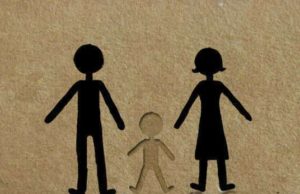
Introduction
Adoption has been an option for parents who were unable to conceive for centuries. In earlier times, adoption was shrouded in secrecy and the identity of the biological parents was withheld from the children. The goal was to protect the child from developing any emotional bond with their biological parents, in the hopes that they would grow up without any emotional repercussions. This was known as closed adoption. However, in the 1960s and 1970s, the narrative on adoption began to shift when the idea of open adoption was introduced. Open adoption allows for communication and contact between the biological parent/s and the child.
In an open adoption, the biological parents, adoptive parents, and the child can all be involved in each other’s lives and can form relationships that are meaningful and beneficial for everyone involved. This approach is one of transparency, honesty, and respect. It recognizes that children have the right to know and connect with their biological parents, while still providing the security and love that comes with being raised by adoptive parents. Let’s dive in to learn more about what open adoption entails.
Open Adoption: A Definition
Open adoption refers to a situation in which there is some form of interaction and communication between the birth family, the adoptive family, and the adopted child. This exchange can take place online, through letters, phone calls, or regular in-person visits depending on the preference of the parties involved. There are no fixed rules or regulations around how often or how frequently these interactions should occur. The level of openness may vary depending on the preference and comfort levels of everyone involved.
In an open adoption, the adoptive parents have information about the birth family such as their medical history, family background, culture and values, which can be valuable in maintaining a connection between the birth and adoptive families. This information can be helpful in the child’s development and can also be important in understanding the child’s identity and sense of self.
Types of Open Adoption
There are several types of open adoption, and some of the most common forms include:
1. Fully open adoption – This involves an agreement for the biological parents, adoptive parents, and child to interact. Depending on the agreement, it could be possible for the birth parent/s to have a significant and ongoing role in the child’s life.
2. Semi-open adoption – In this type of adoption, the adoptive family and biological family keep in touch but there may be limits on the frequency and nature of interaction.
3. Mediated adoption – Mediated adoption is when communication is done through a third-party mediator such as an adoption agency or a social worker in cases where there is a need to monitor interactions.
4. Limited contact adoption – In this type of adoption, there is minimal contact between the biological family and the adoptive family. This might involve occasional updates from the adoptive parents to the birth family or vice versa.
Benefits of Open Adoption
Open adoption offers many benefits for everyone involved, particularly for the child. Here are some of the advantages of open adoption:
1. Connection to biological history – Open adoption provides the adopted child with access to their biological history, family heritage, and ancestry. This information can give the child a sense of identity and roots, which can be valuable as they grow up.
2. Better mental health outcomes – Research has shown that open adoption can lead to better mental health outcomes compared to closed adoption. In a study published in the Journal of Family Psychology, researchers found that adoptees who had contact with their biological family had better psychological outcomes than those who did not have contact.
3. Improved relationships – Open adoption can also help improve relationships between the adoptive parents, the biological parents, and the child. These relationships can offer support to everyone involved, thus creating a positive environment for the child.
4. Reduced stigma – Open adoption reduces stigma associated with adoption. It creates a more inclusive environment in which adoption is viewed as a positive and normal way to grow a family.
Challenges of Open Adoption
While open adoption offers many benefits, it also presents some challenges.
1. Co-parenting challenges – Establishing boundaries and maintaining a healthy relationship between the biological parents and the adoptive family can be difficult and requires a great deal of communication, flexibility, and mutual respect.
2. Fear of being replaced – In some cases, the biological parents may have concerns about being replaced by the adoptive parents or fear that the child may not value their biological connection due to the strong bond formed with the adoptive family.
3. Complex emotions – Adoption and open adoption can evoke complex emotions in everyone involved, including feelings of guilt, sadness, or joy, creating a challenging emotional landscape for everyone involved.
4. Responsibility – Open adoption requires a level of responsibility from the adoptive family to maintain open communication with the biological family and keep the child’s best interests in mind. Failure to maintain these connections can have negative outcomes for everyone involved.
Conclusion
Open adoption is becoming an increasingly popular model of adoption in today’s society. It provides numerous benefits for the adoptees, the biological parents, and the adoptive family. The willingness of all parties to maintain communication and form relationships can foster a sense of understanding, acceptance, and support for everyone involved. While open adoption has its challenges, the benefits far outweigh the difficulties and the support, health, and benefits available to children and families, we can expect to see open adoption increasingly adopted, recognized, and promoted by government and non-profit organizations alike, as studies suggest open adoption provides the best outcomes for everyone involved.
The Option of Open Adoption
Open adoption is a form of adoption that allows and maintains a continuous relationship between the birth family, adoptee, and the adoptive family. Having a fully open adoption can allow inclusion of extended relatives such as siblings and birth grandparents.
There are different reasons to consider an open adoption:
• To prevent or minimize any loss of relationships in the child’s life.
• To keep and celebrate any connections the child has to people that are important in his or her life.
• To have the child resolve any losses with the truth, instead of having the child create a fantasy that many adopted children often have when they do not have any contact or information their birth family.
There are many levels of openness in open adoption. There are often incorrectly considered open adoption, but in reality these options tend to be less open. Sometimes they may mean that the birth parents and adoptive parents have each other’s contact information. It may also mean that they exchange photographs and letters, which may or may not be done through a third party.
Regardless of the level of openness in an adoption, both the birth parents and adoptive parents need to have open lines of communication and the same understanding of just what is allowed and not allowed in the open adoption. Furthermore, both sets need to be committed to meeting if not exceeding the child’s needs throughout his or her life.
Family members will interact in means that are most comfortable to them and other parties involved. This can be through:
• Emails
• Phone calls
• Visits
• Letters
The frequency of these interactions is typically negotiated between the parties. The frequency can range from every few years many times a month or weekly or even more than that. The amount of contact can vary depending on the child’s age and any questions he or she may have about the adoption. Regardless of the agreement in an open adoption, it is important to realize that there is no legal relationship between a child and birth parents. The legal parents of an adopted child are the adoptive parents.
There are many different things to consider about an open adoption before going through with it. Families need to figure out how much a child will know about a birth family and how much of a relationship they want the child to have. Some questions to think of include:
• How old should a child be when contact with a birth family starts?
• What happens in a situation where a party breaks off contact completely?
• What is the role of the birth parents?
• How will the child explain with the relationship with the birth relatives to peers?




























